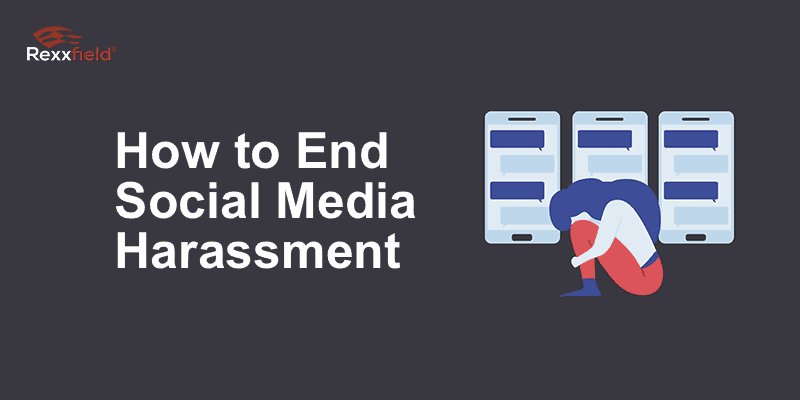Social Media Harassment: What Can Be Done?
According to a 2021 Pew Research Center Report, 41% of Americans have at some point been the target of online harassment. Around 75% were victims of social media harassment where the attacks occurred on social media platforms and applications. It affects not only pre-teens on Instagram or any social media channel, but it happens just as much to adults and businesses with serious consequences if not handled appropriately.
If someone is sending you harmful, threatening, or abusive messages via Instagram, Facebook, Twitter, or any other social media platform, they could be committing an offence. These offences are called ‘harassment’ and ‘malicious communications’. For the behaviour to qualify as harassment, there must be a clear course of conduct, meaning there have to be two or more related occurrences. The content of the messages doesn’t necessarily have to be violent in nature, but they need to have caused fear or distress.
If it has only been one occurrence of communication, it likely won’t be seen as harassment, but malicious communication. For it to be considered malicious communication, a message has to be sent to someone else, or via a public communications network, with indecent, grossly offensive, threatening, menacing, or obscene language.
For online harassment to be punishable as a criminal offence, it must have caused the victim reasonable fear of death or serious bodily injury, or fear that someone in their immediate family may be harmed.
What to do if someone is harassing you on social media
Report the account (only if you decide not to investigate the owner of the profile!)
Save evidence of social media harassment before reporting the account in case the harassment continues.
Nearly all social media platforms have rules for fake profiles and profiles impersonating someone. Report the fake account by following the process of the platform, and they will investigate the account. They will remove the account and its content if it is found to be fake or impersonating.
However, if you want our investigators to identify the owner of the harassing profile(s), we will need to engage with the profile(s). Therefore, you should not report the account yet.
Case study – Identifying Snapchat/Instagram Sextortionist
 Preserve Evidence
Preserve Evidence
Save as much evidence as you can. Social media posts can be temporary or deleted by the user. When it’s live, immediately screenshot or screen record the post or message. You may be tempted to delete the message or evidence from your phone, to not think about it, but you must preserve the evidence as soon as you see it.
Document all instances of social media harassment, make screenshots, etc.
Here you can find evidence preservation tips.
Collect as much important information as you can. Examples of important details are
- (User)Name,
- Email address,
- The URL of the harassing profile.
- Screenshots of the harassing communications,
- Messages from the antagonist to you.
- Date and time stamps
If you are too late to take screenshots, write down as much information as you can remember.
Identify the owner of the harassing profile(s)
Our investigators specialize in identifying anonymous trolls on the internet. We can help you identify your antagonist and our methods work for:
Help me identify my antagonist
Social media harassment laws
Most states don’t have specific criminal social media harassment laws that differentiate offline and online conduct. A state could have harassment and stalking laws, but not cyberharassment or cyberstalking laws. But cyberharassment and cyberstalking laws typically apply to online communications as well.
Cyber Harassment Defined Under California Law – 653.2 PC
California criminalizes online harassment. Under Section 653.2 of the California Penal Code. 2 Under 653.2. It is a misdemeanour to post certain types of information about someone online. The information published must be likely to incite or instigate unlawful action by a third party. The information often involves personally identifying information such as the phone of the other person or a harassing message about the other person.
Furthermore, the intent of the harassing communication must be to instil reasonable fear in the victim for their safety or the safety of their immediate family. The harassing communication must also take place without the victim’s consent.
An example of online harassment would be when an antagonist posts a photo of the victim with his address and asks third parties to “punch him if you see him”.
Several of the above types of online harassment are typically addressed through California’s cyber harassment statute (653.2).
Is Trolling Illegal in California?
Trolling is when an individual posts hostile, off-topic, or inflammatory messages on social media platforms. This is not unlawful in California. However, if the trolling rises to the level of including threats, it could be considered unlawful and addressed under Section 653.2. 2
Types of Pestering on Social Platforms
Cyberstalking:
Cyberstalking is defined as the employment of abusive behaviours electronically with the intent to murder, harm, threaten, or terrorize through surveilling someone online. It is a federal offence, and some states have laws against it.
Cyberbullying:
Cyberbullying refers to a variety of harassing activities where “wilful and repetitive harm is perpetrated through the use of computers, mobile phones, as well as other electrical gadgets.” The phrase cyberbullying is mostly applied to children and young people.
Cyber-Mob Violence (Dog piling):
Cyber-mob violence, also referred to as dog piling, is when a big group of abusers release an outpour of accusations, obscenities, insults, and other abusive methods to assault someone. This violence is a form of mob punishment that aims to publicly shame and humiliate a person who has expressed thoughts on politically controversial topics or ideas that the group disagrees with.
Concerned trolling:
This is when abusers impersonate fans or followers of an artist and post damaging and insulting remarks disguised as constructive criticism. Counter-speech can make it worse, and banning may increase the trolling since trolls want to attract attention and waste your time.


 Preserve Evidence
Preserve Evidence